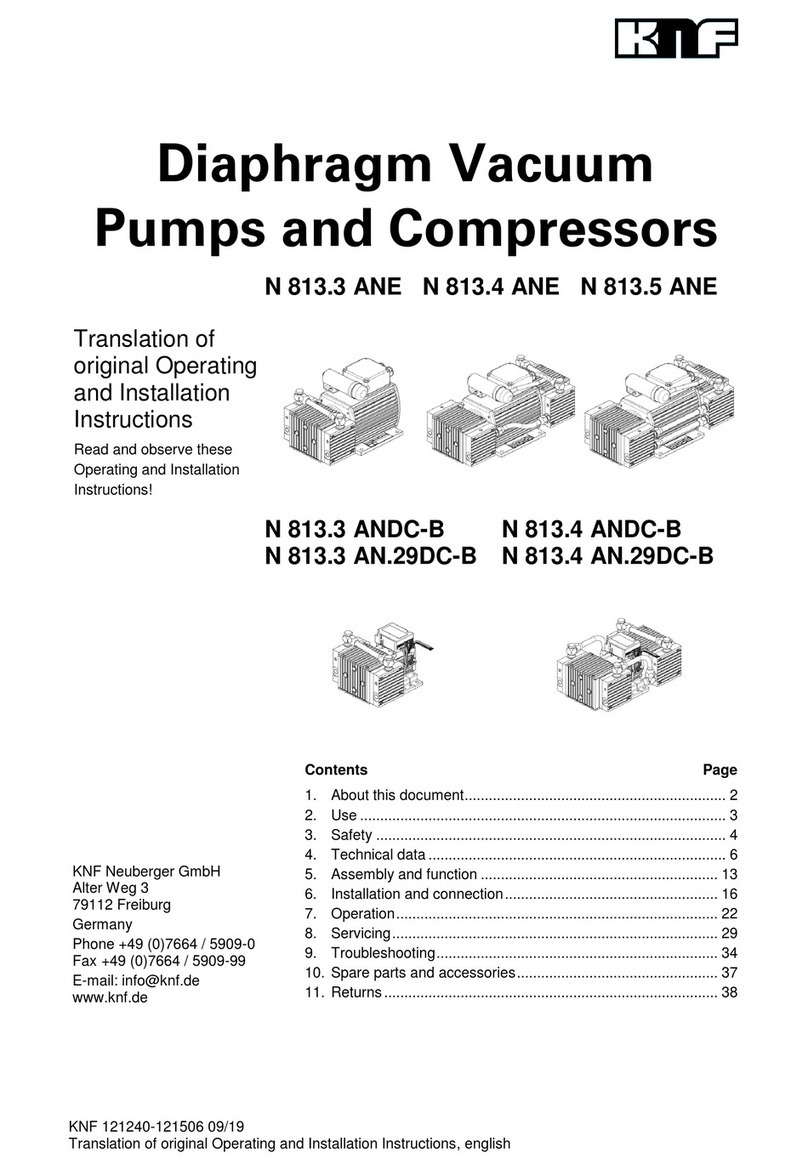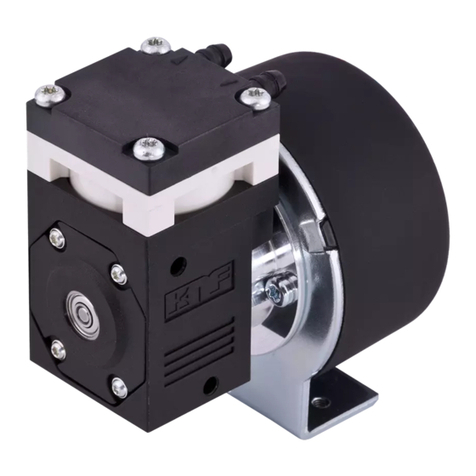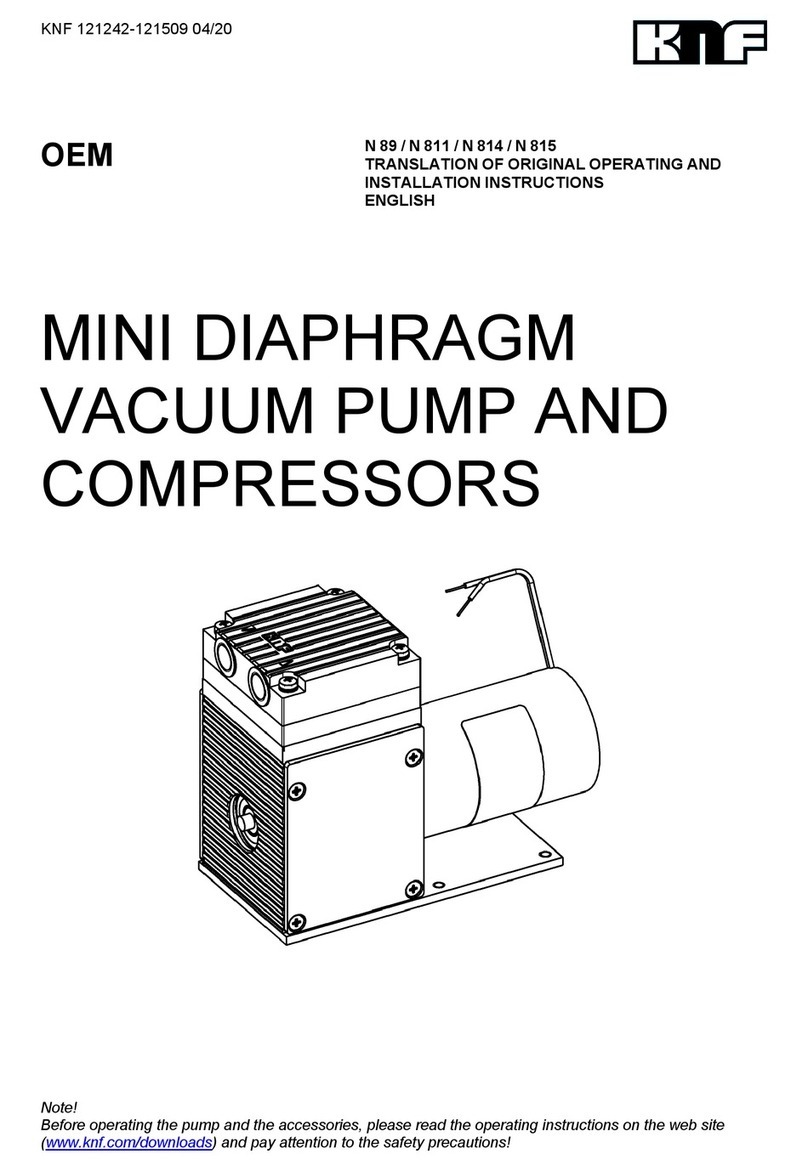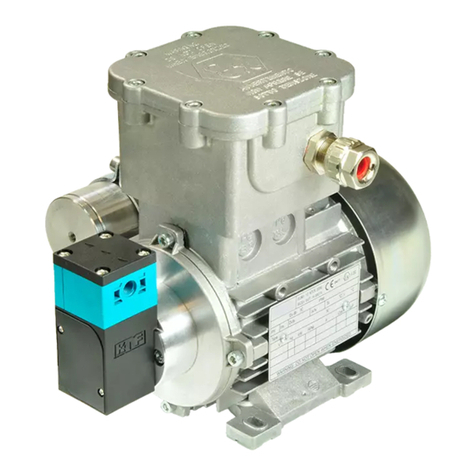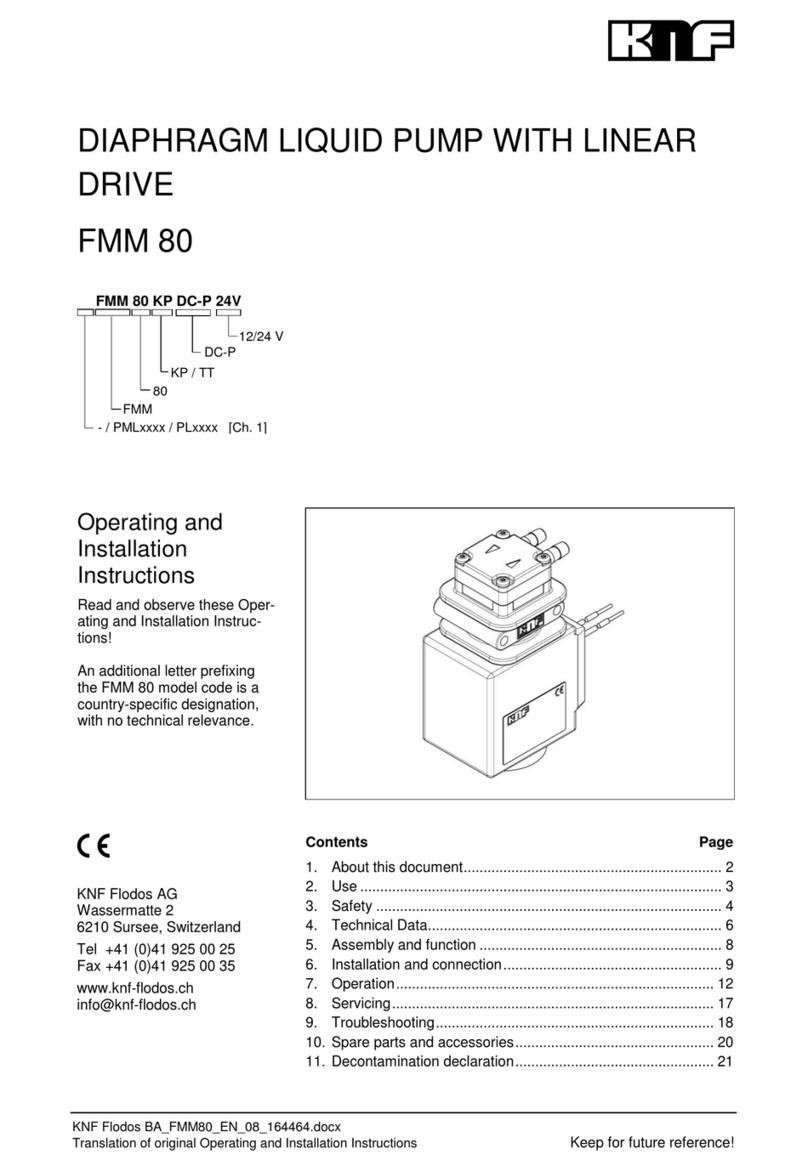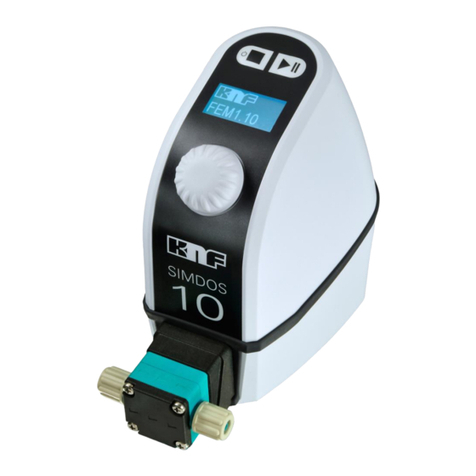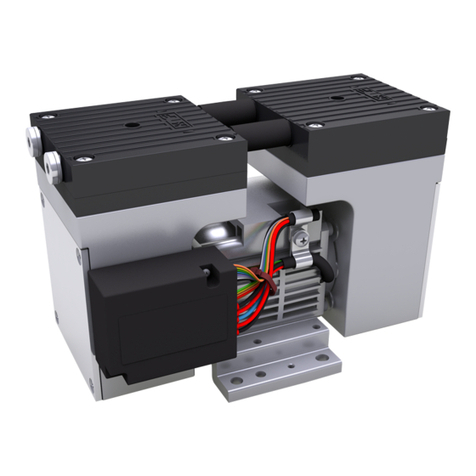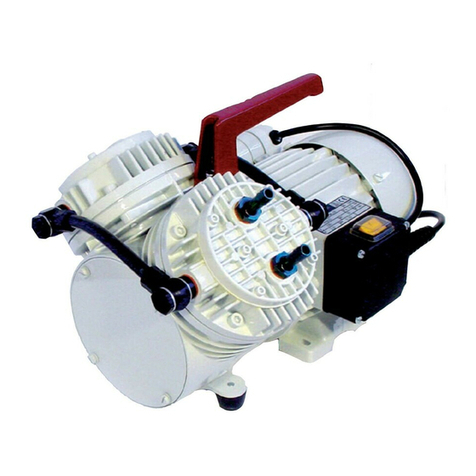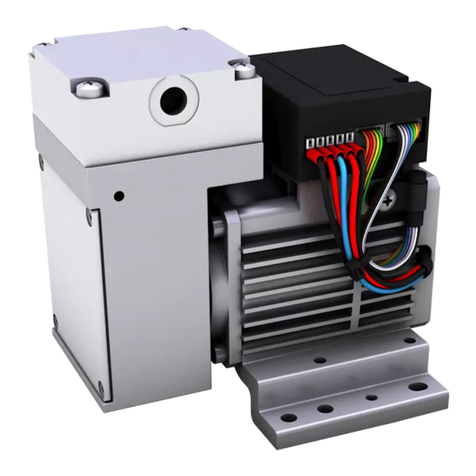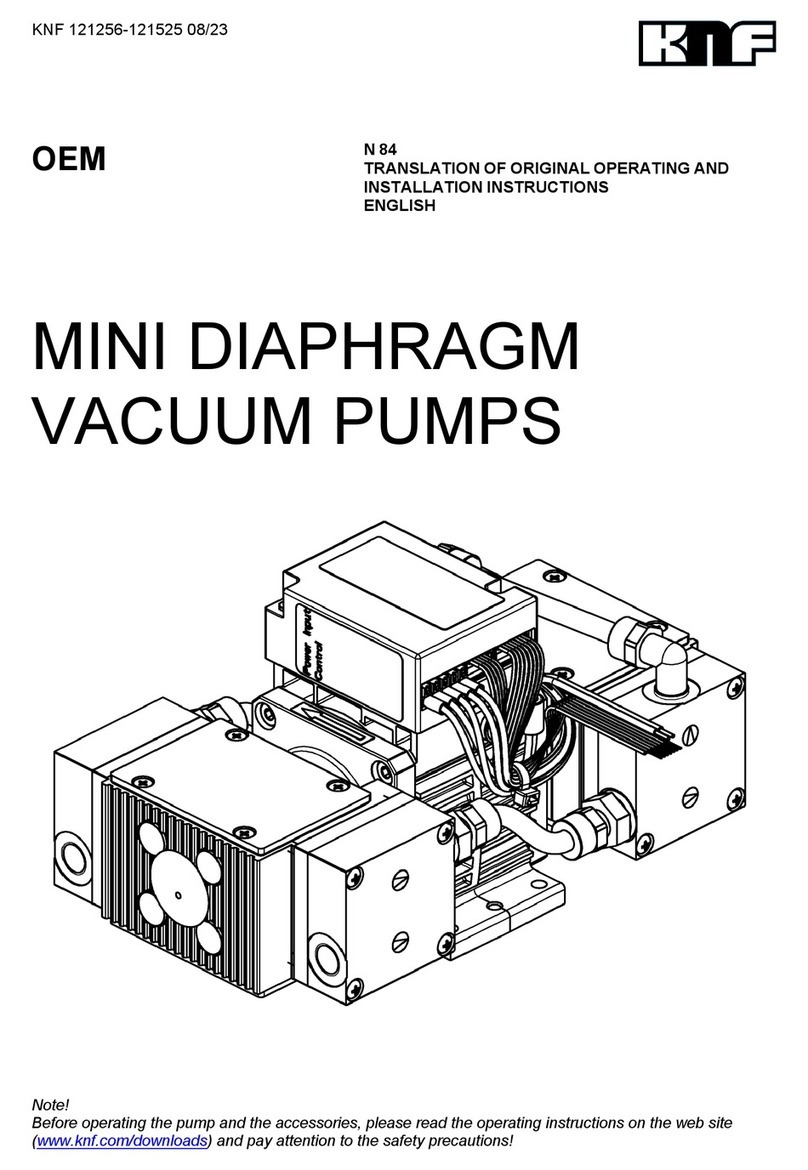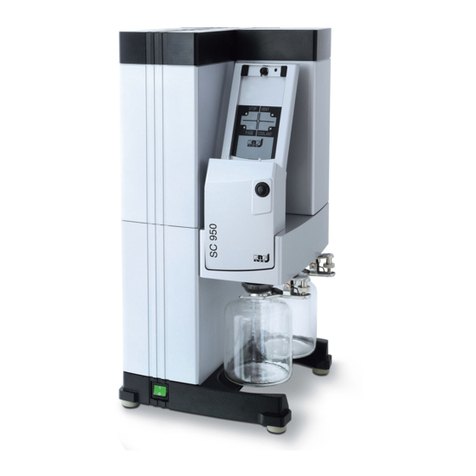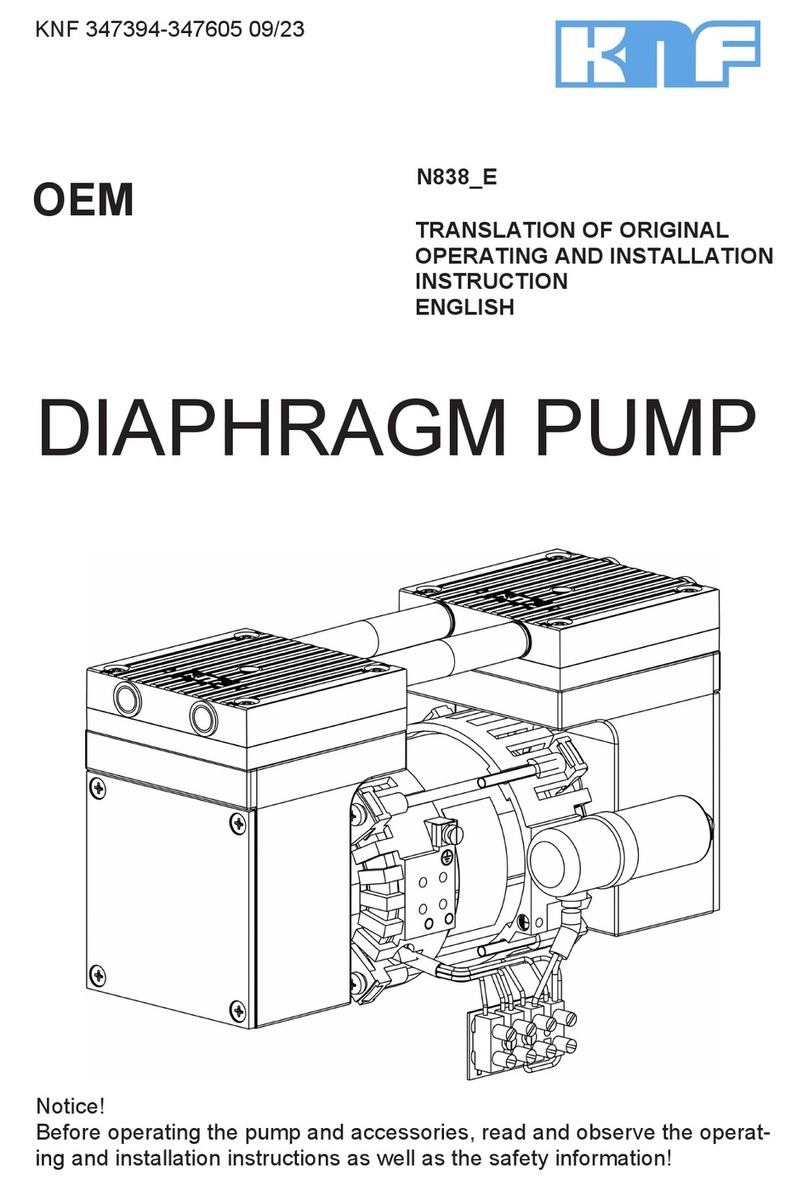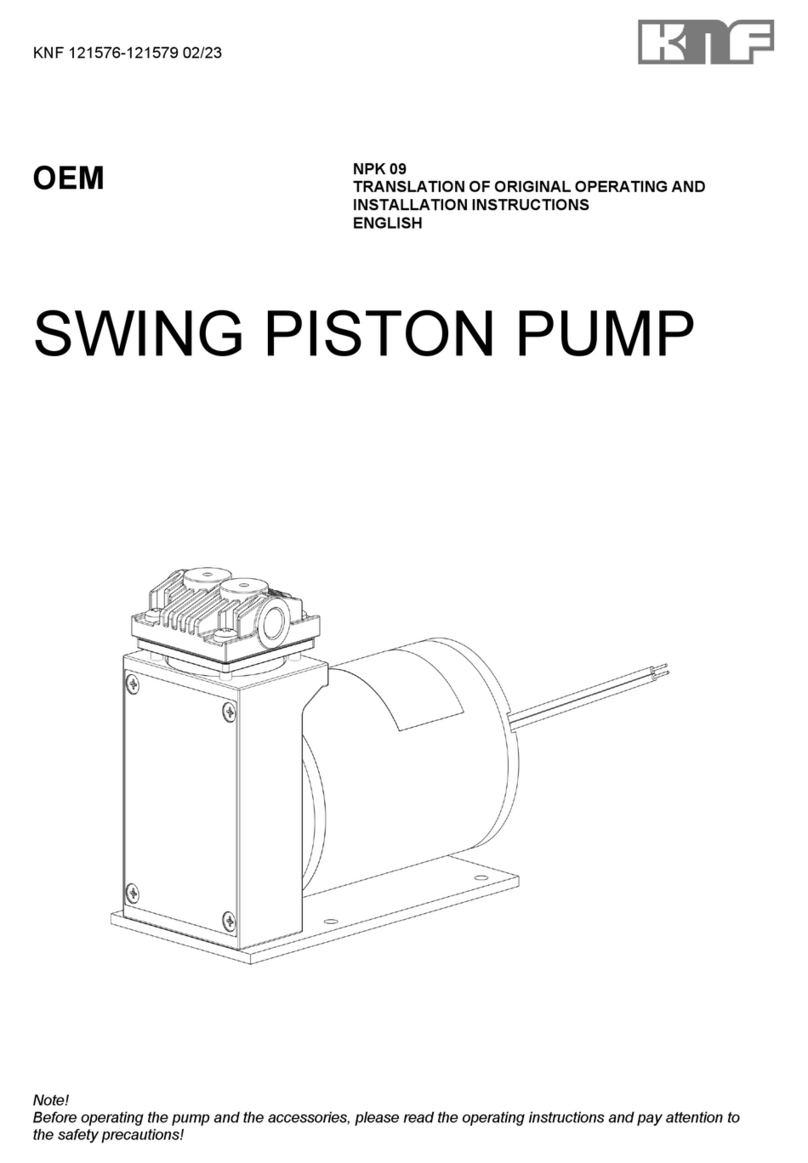
Safety Diaphragm pump N96
6 Translation of Original Operating and Installation Instruction, English, KNF 316836-316838 01/20
3 Safety
Observe the safety instructions in the Chapters 7 Installation and
Connection and 8.1 Operation.
The pumps are built in accordance with the generally recognized rules of
engineering and the occupational health and safety and accident preven-
tion regulations. Nevertheless, dangers can arise during their use that lead
to injuries to the user or third parties or to damage to the pump or other
property.
Only use the pumps if in technically perfect condition, in accordance with
their intended use, in a safety-conscious and danger-conscious manner
and in compliance with the operating and installation instructions.
The components that are to be connected to the pumps must be designed
according to the pneumatic data of the pumps.
When connecting the pumps to the electrical mains, observe the corre-
sponding safety rules.
Personnel Make sure that only trained and instructed personnel or qualified personnel
work on the pumps. This applies, in particular, to assembly, connection
and servicing work.
Make sure that the personnel have read and understood the operating and
installation instructions, especially the Chapter Safety.
Working in a safety conscious
manner
Observe the regulations on accident prevention and safety during all work
on the pumps and during operation.
Avoid contact with the heads and housing parts as the pump heats up dur-
ing operation.
When working on the pump, make certain that the pump is disconnected
from the mains and is de-energized.
Make certain that no dangers arise from flows when gas connections are
open, from the effects of noise or from hot, corrosive, dangerous and envi-
ronmentally hazardous gases.
Make sure that EMC-compliant installation of the pump is guaranteed at all
times and that no danger situation can arise as a result.
Handling of hazardous media Upon breakage of the diaphragm and/or leaks, the transferred medium
mixes with the air in the surroundings and/or in the pump housing. Make
sure that a dangerous situation cannot arise as a result.
When pumping hazardous media, observe the safety regulations for the
handling of these media.
Handling of combustible media Take heed that the pumps are not designed to be explosion-proof.
Make certain that the temperature of the medium is always sufficiently be-
low the ignition temperature of the medium so as to prevent ignition or ex-
plosion. This also applies for abnormal operating situations.
Bear in mind that the temperature of the medium increases when the
pump compresses the medium.
Therefore, make certain that the temperature of the medium also remains
sufficiently below the ignition temperature of the medium even when it is
compressed to the maximum permissible operating pressure of the pump.
The maximum permissible operating pressure of the pump is stated in
Chapter 4 Technical data.
Make certain that the permissible ambient temperature (4 Technical data)
is not exceeded.
If applicable, also take into consideration external energy sources (e.g. ra-
diation sources) that could additionally heat the medium.
In case of doubt, contact KNF Customer Service.



















